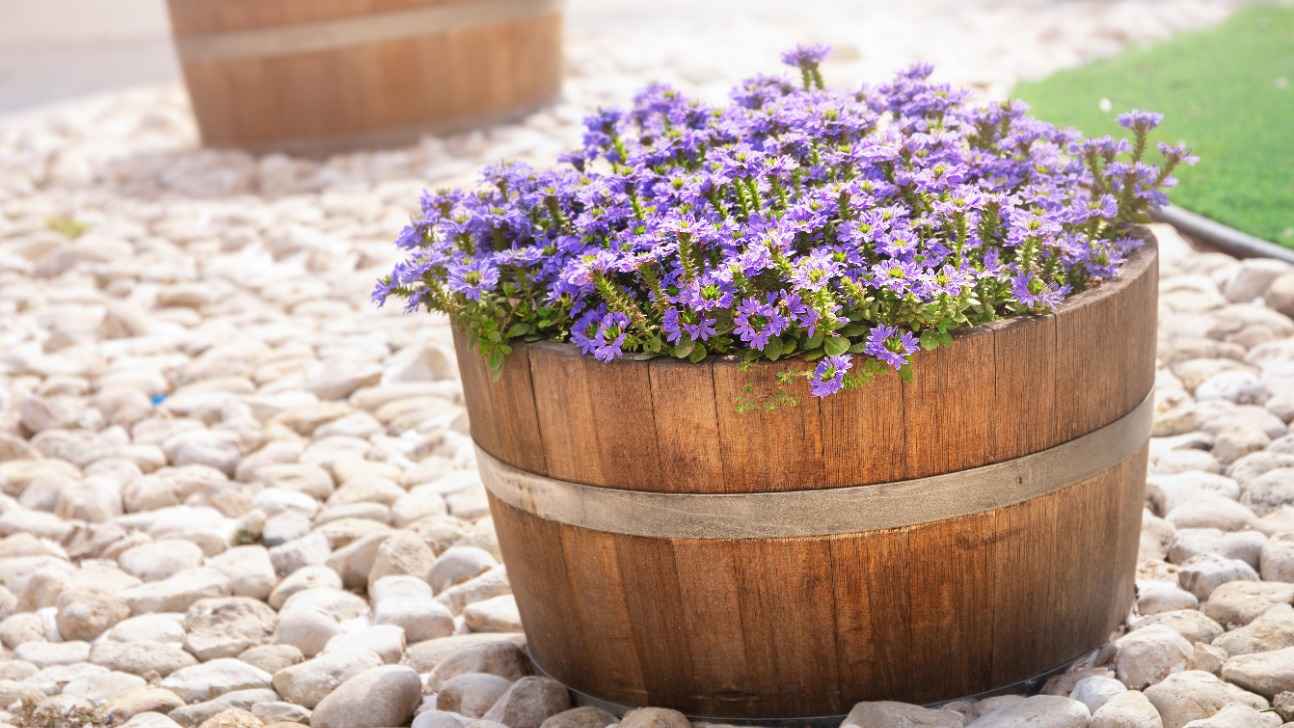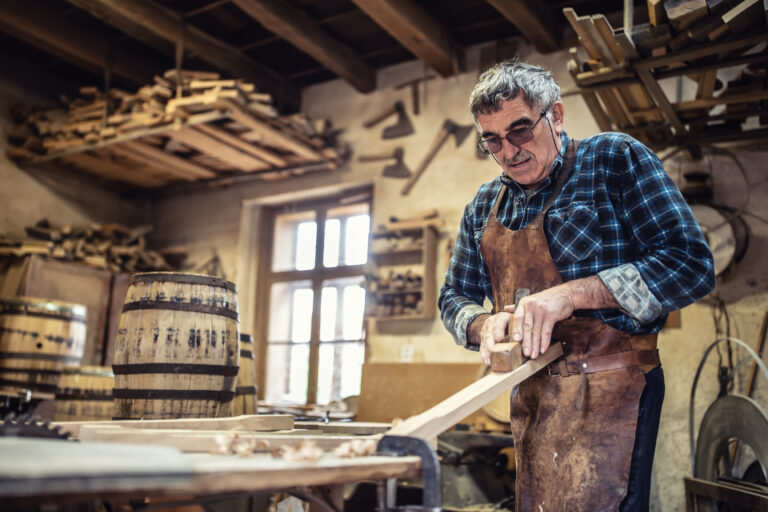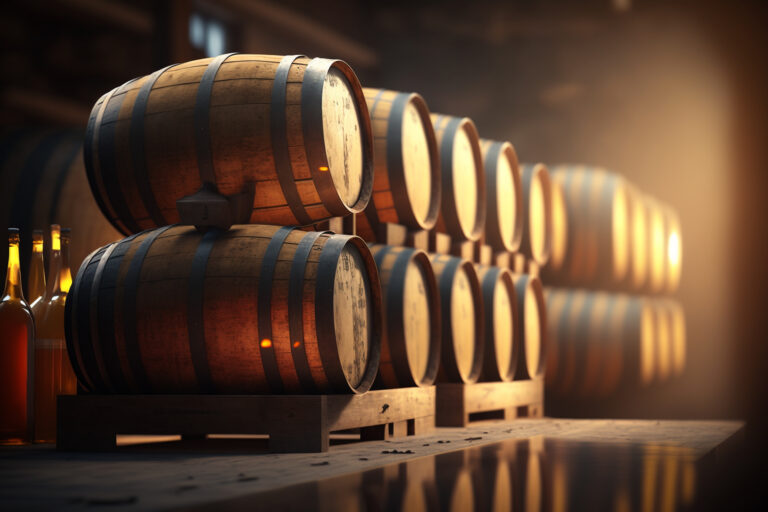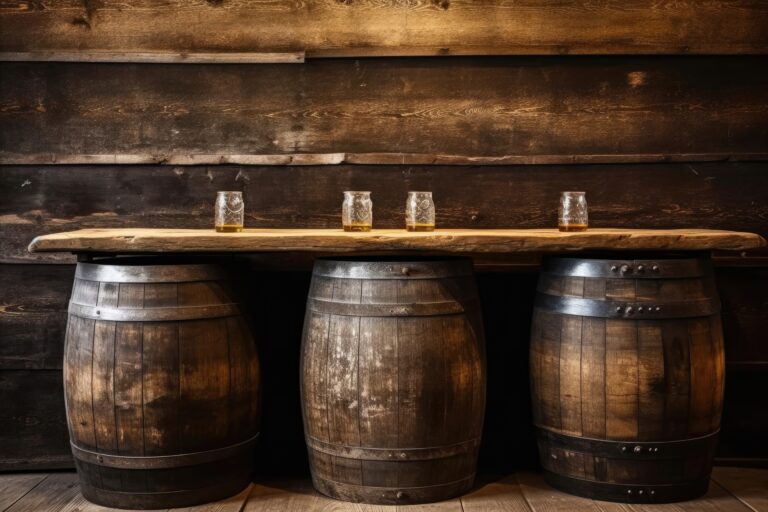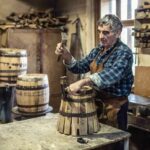You’ve always loved gardening and the idea of a lush perennial garden appeals to your green thumb. But who has the space for that, right? Even if you have a small yard, you likely don’t want to commit the whole thing to flowers. So you’ve been eyeing those rustic whiskey barrel planters and wondering if you can use them to create a compact perennial garden. The short answer is yes, you absolutely can grow perennials in whiskey barrels. These containers are ideal for smaller gardens or if you want to add greenery to a patio or deck. The aged wood also gives them a charming farmhouse vibe that pairs perfectly with colorful blooms. Read on to learn some tips for creating your own whiskey barrel perennial garden.
What Are Perennials?
Perennials are plants that come back year after year. Unlike annuals that die off at the end of the growing season, perennials go dormant in fall and winter, then return in spring.
- Their roots remain alive underground even after the tops die back, so they sprout new growth when conditions are right.
- This means you can enjoy the same plants for many years without having to start over from seed.
Some popular perennials for whiskey barrels include:
- Lavender, which produces fragrant purple flowers. Just plant one or two since they can get quite large.
- Catmint, with soft gray-green leaves and pale purple blooms. It attracts pollinators like bees and butterflies.
- Salvia, available in red, pink or blue depending on the variety. Their colorful spires add vertical interest.
- Sedum or stonecrop, a low-maintenance succulent perfect for cascading over the sides of a barrel.
So for a planter you want to enjoy for seasons to come, perennials are the way to go. They may require a bit more initial investment, but will reward you with years of beauty in return. Why not pick a few favorites and get started? Your whiskey barrel will be overflowing in no time.
Benefits of Growing Perennials
One of the best things about growing perennials in whiskey barrels is that you only have to plant them once. Unlike annuals that die off each year, perennials will come back on their own every spring.
- Save time. No need to buy new plants or redesign your garden each season. Your perennials will spread and fill in the barrel over time.
- Save money. After the initial investment in plants, you’ll only need to fertilize and prune to keep your perennial barrel garden looking its best for years to come.
- Create a focal point. A large whiskey barrel overflowing with colorful blooms makes an eye-catching centerpiece for any outdoor space.
- Easy care. Most perennials don’t require much maintenance once established. Just make sure the soil stays consistently moist, place the barrel in a spot with plenty of sun, and fertilize lightly during the growing season.
With the right choice of plants, a whiskey barrel perennial garden can provide delight year after year. The hardest part may be narrowing down your options, as there are so many wonderful perennials to choose from!
Choosing the Right Perennials for Whiskey Barrels
Some perennials that work well in whiskey barrels include:
- Lavender: Drought-tolerant, fragrant lavender flourishes in whiskey barrels. Its aromatic silvery foliage and purple flowers attract pollinators.
- Catmint: Catmint, with its soft gray-green leaves and pale purple flowers, is a perfect companion for lavender. It’s deer-resistant and low-maintenance.
- Sedum (Stonecrop): Sedum produces clusters of star-shaped flowers in shades of pink, red, and yellow. Its succulent leaves come in shades of green, red, and blue-gray. Sedum thrives in the hot, dry conditions of a whiskey barrel.
- Dianthus (Pinks): Dianthus offers ruffled pink, red, or white flowers with a spicy fragrance. Its blue-green foliage provides an attractive backdrop for the flowers. Dianthus prefers full sun and well-drained soil, so it’s ideal for whiskey barrels.
- Thyme: Thyme is a culinary herb that also works well as an ornamental plant. It produces tiny pink, red, or white flowers and aromatic green leaves. Thyme can tolerate some foot traffic and releases its scent when brushed against or crushed.
These fragrant, sun-loving perennials will thrive in your whiskey barrel planter, providing seasons of color and interest. With the proper care and maintenance, your perennial-filled whiskey barrel will be a stunning focal point in your garden for years to come.
Preparing the Whiskey Barrel for Planting
Before you plant your perennials in a whiskey barrel, you’ll want to prepare it properly.
First, make sure there are drainage holes in the bottom of the barrel. If not, drill several 1/2-inch holes spaced a few inches apart. This will allow excess water to drain and prevent root rot.
Next, fill the bottom of the barrel with about an inch of gravel or perlite to improve drainage. Top that with a mixture of potting soil and compost or composted manure. For most perennials, a mixture of 2 parts potting soil to 1 part compost works well.
Check that the pH level of the soil is between 6 and 7, which is slightly acidic to neutral. Perennials generally prefer soil in this range. You can test your soil with an inexpensive pH meter or kit and amend as needed.
Once your whiskey barrel is properly prepared with drainage, soil, and the right pH, you’re ready to plant your perennials. Space the plants according to the recommendations on their tags or seed packets. Water thoroughly after planting and place the barrel in a spot with plenty of sun exposure.
With the right site conditions and preparation, your perennials should thrive in a whiskey barrel planter. Be sure to water when the top few inches of soil are dry and fertilize during the growing season. Your plants will reward you with years of enjoyment!
Best Perennials to Grow in Whiskey Barrels
Lavender
Lavender is a fragrant perennial that thrives in whiskey barrels. Its soft purple flowers attract bees and butterflies. Plant lavender in a spot with full sun and well-drained, alkaline soil. Water lavender regularly, especially for the first year, but avoid overwatering. Once established, lavender is drought tolerant. Prune lavender after flowering to promote new growth.
Catmint
Catmint, also known as catnip, produces pale purple flowers that attract bees, butterflies, and cats. This mint family member thrives in full sun or partial shade and well-drained soil. Catmint is relatively low-maintenance, as it is drought tolerant and deer resistant. However, it can spread aggressively, so you may need to prune it back.
Thyme
Thyme is a aromatic, edible herb that produces delicate pink flowers. It thrives in full sun and well-drained, alkaline soil. Thyme requires moderate watering and fertilizing. Prune thyme in early spring before new growth starts to encourage full, bushy plants. Thyme attracts bees, butterflies, and other beneficial insects.
Echinacea
Echinacea, also known as coneflower, produces daisy-like purple flowers that attract butterflies and birds. Plant echinacea in full sun and well-drained, fertile soil. Water echinacea regularly, especially the first year. Once established, echinacea is relatively drought tolerant. Deadhead echinacea flowers to promote new growth. Echinacea spreads slowly, so it is a good perennial for smaller gardens.
Caring for Perennials in Whiskey Barrels
Caring for perennials planted in whiskey barrels requires some extra attention. The confined space means roots stay more compact, so the soil can dry out quickly. Be sure to check the soil moisture regularly and water when the top few inches become dry.
Fertilize during the growing season. Use a balanced, all-purpose fertilizer once a month. Reduce feeding in the fall when growth slows. Never over-fertilize, as the concentrated space means roots absorb more nutrients. Always follow the directions on the product packaging.
Repot if needed. Watch for roots protruding from the drainage holes or if water runs straight through the barrel. Move up one size, and refresh the potting mix. Make sure at least 1/3 of the barrel has new, fresh potting soil so roots have room to spread.
Prune to shape. Remove dead or damaged foliage and trim plants to improve their shape and fullness. Pruning also allows for better air circulation which helps prevent disease.
mulch in spring. Add a 2-3 inch layer of mulch around the base of the plants. This helps retain moisture in the soil and prevents weeds. Pull any weeds regularly.
Protect from winter. Move barrels to a sheltered area, like a garage or shed before the first frost. Bury them in mulch for extra protection. This shields roots from freezing and thawing over winter so your perennials return healthy next spring.
With the right care and maintenance, perennials in whiskey barrels can thrive for many years. Following these best practices will keep your plants looking their best all season long.
Overwintering Perennials in Whiskey Barrels
To keep perennials alive over winter in whiskey barrels, there are a few key things to keep in mind.
First, make sure the barrel is in a spot protected from harsh, drying winds. Place it near the foundation of a building or behind a fence. This shelter will help the soil stay moderately moist even when the plant is dormant.
Check that the drainage holes in the bottom of the barrel are not clogged so excess water can escape. While the plant is dormant, the soil should be damp but not soggy.
Cover the entire barrel with an insulating material like straw, evergreen boughs, or a tarp. This protects the plant from fluctuating temperatures and drying winds. Remove the cover in early spring once the threat of hard freezes has passed.
In very cold climates, you may need to provide extra insulation around the base of the barrel. You can wrap it in bubble wrap, burlap or landscape fabric and fill the inside with leaves, straw or foam packing peanuts. Make sure the filler material is snug around the base to prevent air pockets.
Once growth starts in spring, remove the winter protection gradually to harden the plant off to outdoor conditions again. Feed and water the plant and it will take off for another summer of growth. With the right care and protection, perennials can thrive for many years in whiskey barrel planters.
Tips for Success With Perennials in Whiskey Barrels
To have success growing perennials in whiskey barrel planters, keep these tips in mind:
Plant Selection
Choose perennials that do well in containers, such as lavender, catmint, sedum, thyme or chives. Their compact size means they won’t outgrow the barrel quickly.
Soil and Drainage
Whiskey barrels dry out fast, so use a well-draining soil mix. Add perlite or vermiculite to improve drainage and aeration. Drill extra holes in the bottom of the barrel as well.
Watering
Check the soil moisture often, at least once a week. Water thoroughly until it flows out the drainage holes. Let the top few inches dry out between waterings. Overwatering can lead to root rot.
Fertilizing
During the growing season, feed your perennials every few weeks with a balanced fertilizer. Use at 1/2 the recommended strength. Reduce or stop feeding in the fall and winter when growth slows.
Repotting
You may need to repot perennials in barrels every 2-3 years as they become root bound. Move them up one size barrel and refresh the potting mix. Do this in early spring before new growth starts.
Pruning
Prune perennials after flowering to maintain their shape and size. Remove dead or dying foliage as needed to keep the barrel looking tidy.
Overwintering
Move the barrel to a sheltered area before frost. Add a layer of mulch around the base for insulation. In colder climates, wrap the barrel in burlap or bubble wrap and fill it with leaves, straw or pine needles for extra protection.
FAQ – Answering Common Questions About Growing Perennials in Whiskey Barrels
Can perennials grow in whiskey barrel planters? Absolutely, with the proper care and conditions. Whiskey barrels make charming containers for perennials.
What kind of soil should I use? A lightweight, well-draining potting mix is best. Look for a mix specifically for container gardening. Add compost to help retain moisture.
How often should I water? Check the soil regularly and water when the top few inches become dry. Most perennials need moderate, consistent moisture. Never leave them sitting in water.
Do I need to fertilize? During the growing season, fertilize your perennials every few weeks. Use a balanced fertilizer and follow the directions on the product packaging. Reduce feeding in the fall when growth slows down.
When should I repot? Repot your perennials every 2-3 years in the spring before the growing season starts. Move up one size container. Remove the plant from its pot and loosen the root ball. Add fresh potting mix and place in the new container, burying the root ball to the same depth as before.
What are some good perennials for whiskey barrels? Some top choices include lavender, coneflower, astilbe, geranium, salvia, and sedum. These are hardy, come in a variety of colors, and have charming flower shapes that pair nicely with the rustic look of whiskey barrels.
Final Thoughts
So, can you grow perennials in a whiskey barrel planter? Absolutely, you can. While it may require some extra attention to keep your plants happy, using a repurposed whiskey barrel as a planter for perennials can be a fun DIY project. With the right soil, drainage, fertilizer, and plant choices suited to your climate, you’ll be enjoying a lush display of blooms in no time. And the best part is you get to proudly tell everyone your garden grew from an old whiskey barrel. How cool is that! Give it a try – your perennials and the planet will thank you.
